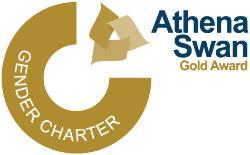Guidelines and policies
SHW guidance on good practice for online meetings
We have all experienced a huge increase in the number of remote meetings we are attending, on Zoom, Teams and other online platforms. The following tips and resources are intended to ensure we get maximum value from these meetings, while being inclusive and reducing "Zoom fatigue".
Planning the meeting
- Consider whether an online meeting is really necessary and is really the best option. Sometimes other options such as shared folders might be more appropriate.
- Online meetings should be no longer than they need to be. A maximum of one hour is desirable, although this is not always feasible. If longer meetings are unavoidable, incorporate breaks.
- Ring-fence some meeting-free time in your diary, e.g. one meeting-free day per week.
- Try to schedule gaps between online meetings to move around or do something different.
- As a change, and for exercise and fresh air, consider a "walking meeting" using your mobile phone.
Setting up
- The task of setting up online meetings should not automatically fall to professional services staff. All staff and students should know how to set up meetings and send calendar invitations, and should do so when possible for meetings they are hosting.
- Try to avoid sending multiple notifications about the same meeting (e.g. calendar invitation followed by separate email containing online meeting link), as this increases email burden and can lead to confusion. Use the integrated meeting app add-ins within your email calendar, or the calendar export function within the meeting app. (For more information on how to do this, see Outlook integration in the Zoom/Teams resources, below.)
- Familiarise yourself with the screen-sharing and whiteboard functions in the online meeting environment, so you can collaborate more productively during the meeting.
- If you are using an adjustable webcam, consider positioning it to one side rather than face on, to avoid having to stare at yourself for long periods. You can also adjust your settings so that your camera image is hidden from your own meeting display screen, while remaining visible to others (currently possible in Zoom but not in Teams).
- A decent camera, microphone and speakers can improve the quality of the meeting experience. Please contact your research unit lead administrator to discuss any additional requirements.
- For inclusivity, please have captions enabled.
During the meeting
- Turning on the camera is optional. When the camera is on, a blurred or virtual background can be used to protect your privacy.
- If you are using the camera during a long meeting, consider switching it off from time to time so you can move around the room.
- For more formal meetings or those involving people who don’t know each other well, the chair/host should invite people to use the "hand up" button and/or type non-urgent comments in the chat box. Since online meetings lack the body language and eye contact cues we are accustomed to in in-person meetings, the chair/host should try to invite contributions from attendees periodically throughout the meeting.
- The abrupt way that, unavoidably, Zoom or Teams meetings come to an end may feel strange and uncomfortable for some colleagues. If you are chairing or leading a meeting, consider leaving the session open for a few minutes at the end, and inviting attendees to stay and chat, in much the same way as happens after face to face meetings.
Inclusivity
- Be aware of accessibility and inclusivity in online meetings, e.g. the impact on those with speech, hearing, visual or cognitive difficulties. Blurring your camera background may improve the experience for other people who read lips or find the background distracting. As above, if you are the meeting organiser, or responsible for setting up a meeting, please ensure that captions are enabled.
- Online meetings involving people working from home may increase the possibility of unconscious bias, arising from assumptions about people’s appearance, home environment and personal belongings, family circumstances and so on. Be especially aware of this in formal meetings e.g. job interviews.
- When working from home during the current circumstances, interruptions during meetings from family members, pets, deliveries etc are to be expected, and should not be judged negatively. Everyone should feel able to be themselves and be comfortable in their home environment. There is no dress code for SHW online meetings.
Using online meeting tools for work-related social events
If you are organising or participating in a work-related social event on Zoom, Teams or another online platform, please continue to comply with University of Glasgow policies relating to conduct e.g. Dignity at Work and Study Policy and Procedure. This would include making sure that all relevant colleagues/team members are invited and treating everyone with dignity and respect.
General resources
Zoom fatigue
Zoom anxiety
Inclusivity and bias
- 3 ways video conferencing can unintentionally cause bias
- 6 ways to have inclusive virtual meetings
- UofG Dignity at work and study policy and procedure
Glasgow Anywhere
- Collaborating and meeting online
Zoom-related resources
Microsoft Teams-related resources
SHW Athena Swan self assessment team
February 2023



